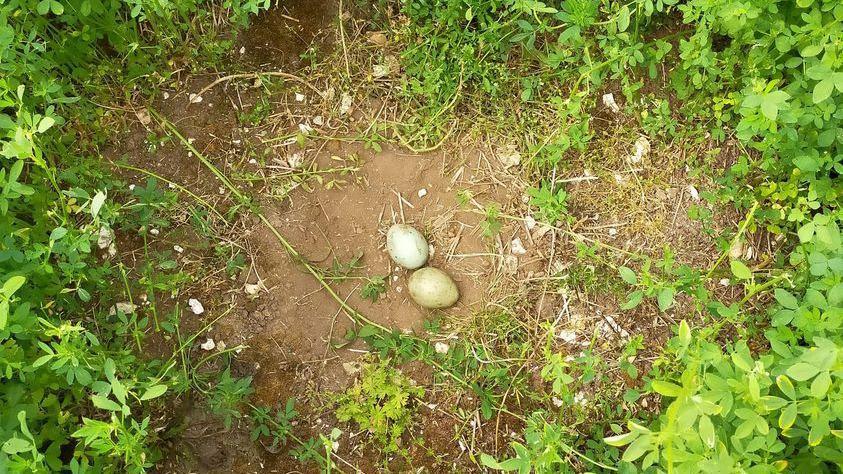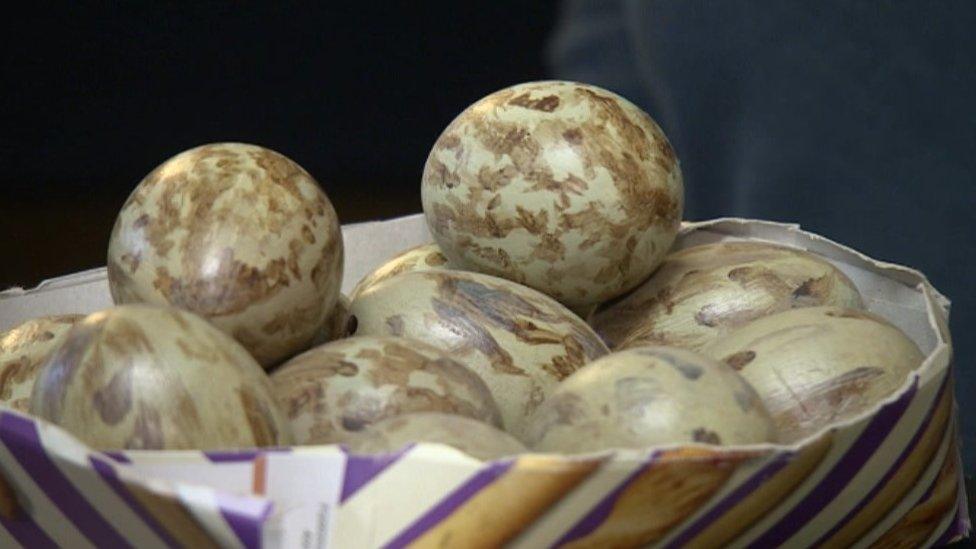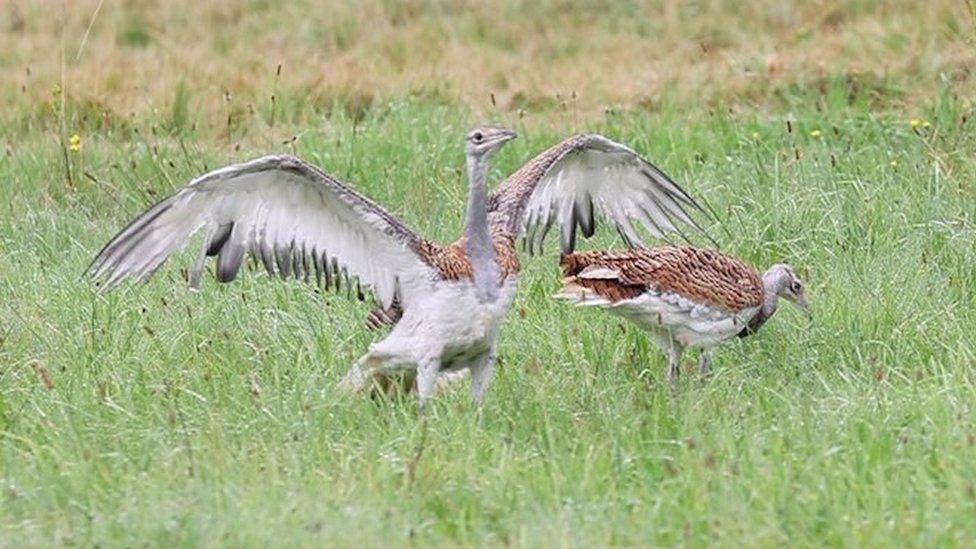Thermal drones used to track down rare birds' nests

Since 1998, hundreds of great bustard have been released on Salisbury Plain in Wiltshire
- Published
Thermal drones are being used to search more than 160,000 acres (250 square miles) looking for nesting great bustard birds.
Since 1998, hundreds of the turkey-like birds have been re-introduced onto Salisbury Plain in Wiltshire by the Great Bustard Group (GBG).
Despite being well established, the ground nesting bird is in danger of being mown down by farm machinery especially the female.
David Waters, from the GBG, said: "Once a female is on a nest, she will sit tight and hunker down in the face of mowing, it's imperative we find nest sites so we can ensure her safety."
The world's heaviest flying bird was hunted to extinction in the United Kingdom, with the last one shot in 1832.
Between 1998 and 2004, the GBG imported eggs and chicks from Russia and Spain then hand-reared and released them.
Mr Waters, said most species of bird fly away the "closer a threat gets" but a nesting female bustard "just hunkers right down and is immobile".
"Their camouflage is incredible and effectively they have no scent," he said.
"They are so confident that predators won't find them, that when the female's [on her eggs] she just sits tight."

The ground nesting great bustard bird is particularly vulnerable to farm machinery during nesting season
In a bid to find the nests, volunteers are using drones with thermal imaging technology. Last year, the group found 40 nests.
"Over the years, we've done field walks with lines of people but it's not effective but the drone team - it works really, really well," Mr Waters said.

Volunteers are using drones with thermal imaging technology to pick up the heat signature of a nesting female bustard
"The thermal imager will pick up the heat signature of a nesting female, and records the location," he explained.
"We can talk to the farm and make sure there's an area left unmown around the nest or under certain circumstances we can rescue the eggs."
Get in touch
Tell us which stories we should cover in Wiltshire
Follow BBC Wiltshire on Facebook, external, X, external and Instagram, external. Send your story ideas to us on email or via WhatsApp on 0800 313 4630.
Related topics
- Published17 October 2019

- Published2 January 2019

- Published5 October 2021
